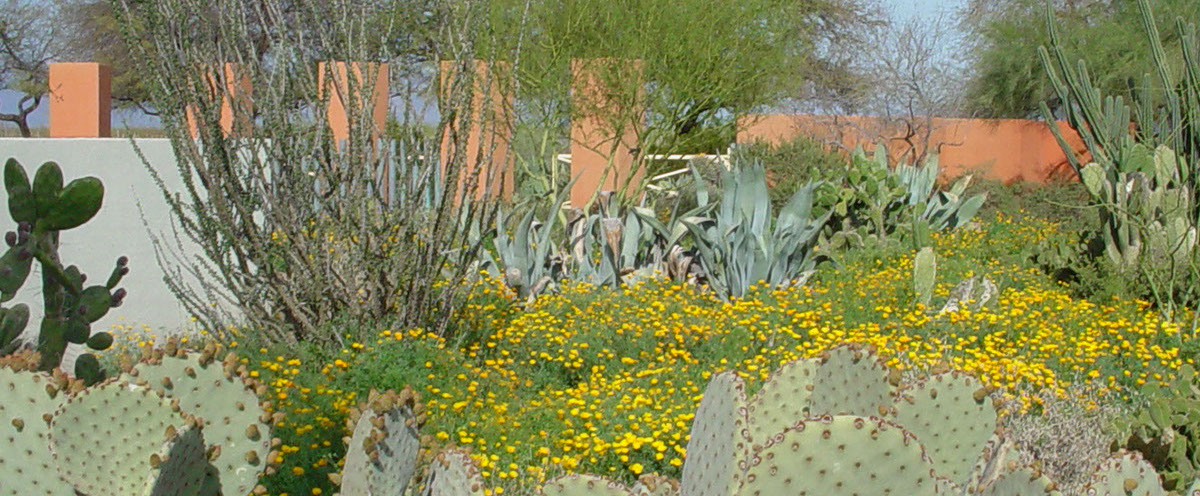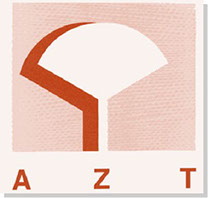


Editor’s Note: The following article is offered in response to the numerous inquiries we have received following January’s very hard freeze. Typical hard freezes in the desert southwest usually range between 22 to 28 degrees F. This freeze reached near historic lows in some areas with temperatures reported in the mid-teens. In this respect the January, 2007 freeze was not typical. Consequently, as spring unfolds and new growth appears on damaged trees, the freeze damage expressed may be more severe than one might typically expect.
Unlike other regions where there is a gradual but definite change in the weather toward cool days and even cooler nights, the desert can remain warm and sunny right up to the first killing frost. While many plants begin slowing growth in response to shorter days, as opportunists, desert adapted tree species will grow as long as water, nutrients and warm temperatures persist. With this extended period of nearly ideal growing conditions, desert adapted trees can be severely damaged when freezing nights do arrive if trees are not properly conditioned.
Plants are damaged by freezing temperatures because the water inside the plant freezes. As liquid water is transformed to ice it forms crystals within and between the cells and tissues in the plant. Ice crystals expand as they grow taking up more space than did the liquid water. This expanding ice crushes, pierces and irreparably damages a variety of plant tissues.
The inherent ability of a plant to tolerate freezing temperatures is called cold hardiness. Cold hardiness is most often reported in terms of a specific temperature or over a of range temperatures (e.g. hardy to 25 F or 23 to 28). These numbers represent temperatures at which, historically, little if any cold damage has been observed but they are not a guarantee. Several factors influence cold hardiness: maturity of the plant, the duration and intensity of freezing temperatures, rain fall, humidity, cloud cover vs. clear night, protection provided by other plants and structures, whether the plant is actively growing or dormant and hardened off and the genetic characteristics of the plant. Many popular desert landscape trees, like hybrid mesquites, will continue to grow so long as temperatures and cultural practices encourage growth. If not hardened off succulent new wood, the result of late summer and early fall growth, is especially prone to frost injury from a sudden drop in temperatures.
What to do with damaged Trees? Trees that are freeze damaged should not be pruned until new growth has appeared, usually late spring or early summer of the year following the injury. In spring you can more accurately detect the extent of damage and better limit pruning to damaged branches only. Good pruning techniques should be used to prevent stimulating excessive or unwanted new shoot growth.
September and October are the best months to begin winterizing landscape trees for the approaching colder temperatures. The simplest and most effective method is to slow growth by gradually reducing irrigation and halting fertilizer application by September 1. This will serve to reduce the amount of new, terminal (tip) growth that is the most susceptible to cold injury. Growth management of this sort can be complicated in landscapes where under-story plantings or winter and fall color plants are added at the end of the summer. Trees and shrubs planted in lawns that are over-seeded with winter grasses pose special challenges. Over-seeding requires that large amounts of water and fertilizer be applied during a season when trees should receive little of either.
A survey conducted by William Kinnison in 1978 (published in Desert Plants") at Central Arizona College after a hard freeze (24-25 F) showed that the following trees were hardy: Acacia aneura, A. berlandieri, A. craspedocarpa, A. stenophylla, Prosopis chilensis, Pithecellobium flexicaule, P. mexicana. Warren Jones writing about the effects of the same freeze in northern Sonora Mexico (also published in Desert Plants"), reported that Lysiloma thornberi was damaged by temperatures below 25F and Olneya tesota were damaged at 20F. Prevention remains the most effective method of preventing cold injury. Appropriate initial landscape tree selection and proper horticultural practices keep the landscape vigorous and minimizes injury from cold temperatures.
Ed Mulrean Ph.D., Editor
Cold Injury 2007

© Copyright 2000-2020 Arid Zone Trees